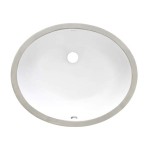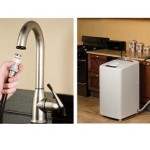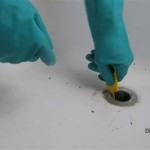Addressing a Slow Draining Kitchen Sink with Garbage Disposal Issues
A slow draining kitchen sink is a common household problem, often exacerbated when a garbage disposal is present. The combination of food particles, grease, and other debris can accumulate within the drainpipes, leading to blockages that significantly impede water flow. Understanding the potential causes and implementing appropriate solutions are essential for maintaining a functional and hygienic kitchen environment. This article will explore the various factors contributing to a slow draining kitchen sink with a garbage disposal, as well as provide methods for diagnosis and resolution.
The garbage disposal itself is a complex appliance designed to grind food waste into smaller particles, allowing it to pass through the plumbing system more easily. However, certain types of food, such as fibrous vegetables, coffee grounds, and grease, can overwhelm the disposal's grinding capabilities or solidify within the pipes, contributing to a buildup that restricts water flow. Furthermore, improper installation or maintenance of the garbage disposal unit can also lead to drainage problems. Regular cleaning and mindful usage are crucial for preventing blockages and maintaining optimal drainage.
Beyond the garbage disposal and the types of food processed, the plumbing system itself plays a significant role in drainage efficiency. Older pipes, particularly those made of cast iron, are prone to corrosion and mineral buildup, which can significantly reduce the internal diameter of the pipe and restrict water flow. The configuration of the drainpipes, including the presence of sharp bends or inadequate slope, can also contribute to the accumulation of debris and the formation of blockages. A thorough inspection of the plumbing system is often necessary to identify and address underlying issues that may be contributing to the slow draining sink.
Identifying the Cause of the Slow Drain
Before attempting any solutions, it's crucial to accurately diagnose the cause of the slow draining sink. This process often involves a systematic approach of elimination, starting with the simplest and most common potential causes. One of the first steps is to determine if the slow drain is localized to the kitchen sink or if other drains in the house are also experiencing similar issues. If multiple drains are affected, it suggests a more significant blockage further down the main drain line, potentially requiring professional plumbing assistance.
A visual inspection of the sink and drain components is another important step. Check for any visible debris or obstructions in the sink strainer or around the garbage disposal opening. Examining the drain stopper, if present, can also reveal accumulated hair or other materials that may be partially blocking the drain. If the garbage disposal is suspected, visually inspect its interior for any large or unusual objects that may be hindering its operation. Ensure the disposal is turned off at the circuit breaker before conducting any internal inspections.
Testing the garbage disposal's functionality can also provide clues. Turn on the disposal and listen for any unusual noises, such as grinding or humming, which could indicate a jammed motor or damaged blades. If the disposal is not operating smoothly or is making excessive noise, it's likely contributing to the slow drain. Note the speed at which water drains while the disposal is running. A significant decrease in drainage speed compared to normal operation suggests a restriction within the disposal unit or the drainpipe directly connected to it.
Simple Solutions for a Slow Draining Sink
Once a potential cause has been identified, several simple solutions can be attempted before resorting to more complex or professional interventions. Hot water, often combined with other household ingredients, can be effective in dissolving grease and loosening minor blockages. Pouring a kettle of boiling water down the drain can help to break down accumulated grease and food particles. However, it's important to exercise caution when using boiling water, particularly with PVC pipes, as excessive heat can potentially damage them. Continuous use of boiling water down PVC pipes is not recommended.
A mixture of baking soda and vinegar is another commonly used household remedy for clearing slow drains. Pour approximately one cup of baking soda down the drain, followed by one cup of white vinegar. Allow the mixture to fizz and bubble for about 30 minutes, then flush the drain with hot water. The chemical reaction between baking soda and vinegar can help to loosen and dissolve accumulated debris. This method can be repeated several times if necessary to achieve the desired results.
Using a plunger can also be effective in dislodging blockages. Ensure there is enough water in the sink to cover the cup of the plunger. Create a tight seal around the drain opening and firmly plunge up and down several times. The pressure created by the plunger can help to dislodge the blockage and allow water to flow freely. It's important to maintain a consistent plunging motion and avoid lifting the plunger completely off the drain opening until the blockage is cleared.
Dealing with More Stubborn Blockages
If simple solutions fail to resolve the slow drain issue, more aggressive methods may be required. A drain snake, also known as a plumbing snake, is a flexible tool designed to reach further into the drainpipe and break up or retrieve blockages. Insert the drain snake into the drain opening and carefully feed it through the pipe, rotating it as you go. When you encounter a blockage, continue rotating the snake to break it up or attempt to hook the blockage and pull it out. Exercise caution when using a drain snake to avoid damaging the pipes or the garbage disposal unit.
For stubborn grease buildup, a degreasing agent specifically designed for plumbing systems can be used. These products typically contain enzymes or chemicals that break down grease and allow it to be flushed away. Follow the manufacturer's instructions carefully when using a degreasing agent, as some products can be harsh and may damage certain types of pipes. Ensure adequate ventilation when using these types of products.
Disassembling and cleaning the garbage disposal may also be necessary if other methods have failed. Before disassembling the disposal, disconnect it from the power supply to prevent accidental activation. Carefully remove the disposal unit from the sink drain and inspect its internal components for any obstructions or damage. Clean the grinding chamber and blades thoroughly, removing any accumulated food particles or debris. Reassemble the disposal unit and reconnect it to the power supply, ensuring that all connections are secure. Testing the garbage disposal after reassembly will confirm if the cleaning process resolved the drainage issue.
Preventive measures are crucial for avoiding future slow drain problems. Avoid disposing of grease, coffee grounds, and fibrous vegetables down the garbage disposal. Periodically flush the drain with hot water and baking soda to prevent the accumulation of grease and debris. Clean the garbage disposal regularly by grinding ice cubes or orange peels to remove residue and freshen the unit. These preventative steps will significantly reduce the likelihood of future blockages and maintain optimal drainage.

Clogged Kitchen Sink With Garbage Disposal How To Solve Quickly 3 Easy Fixes By Diynate

Slow Sink Drain Kitchen Not The Trap Youtube

How To Unclog A Sink Herrmann Services

Diy Guide Fix Slow Draining Disposal Jay S

Garbage Disposal Backing Up Into Sink Mr Rooter Plumbing

Kraus Loften 33 In Drop Undermount Single Bowl 18 Gauge Satin Stainless Steel Kitchen Sink W Faucet And Garbage Disposal Kch 1000 100 75mb

How To Fix A Clogged Kitchen Sink On Both Sides

4 Easy Ways To Unclog A Kitchen Sink With Garbage Disposal

How To Unclog A Garbage Disposal Diy Guide Affresh Appliance Care

How To Unclog Garbage Disposal Steps Included







